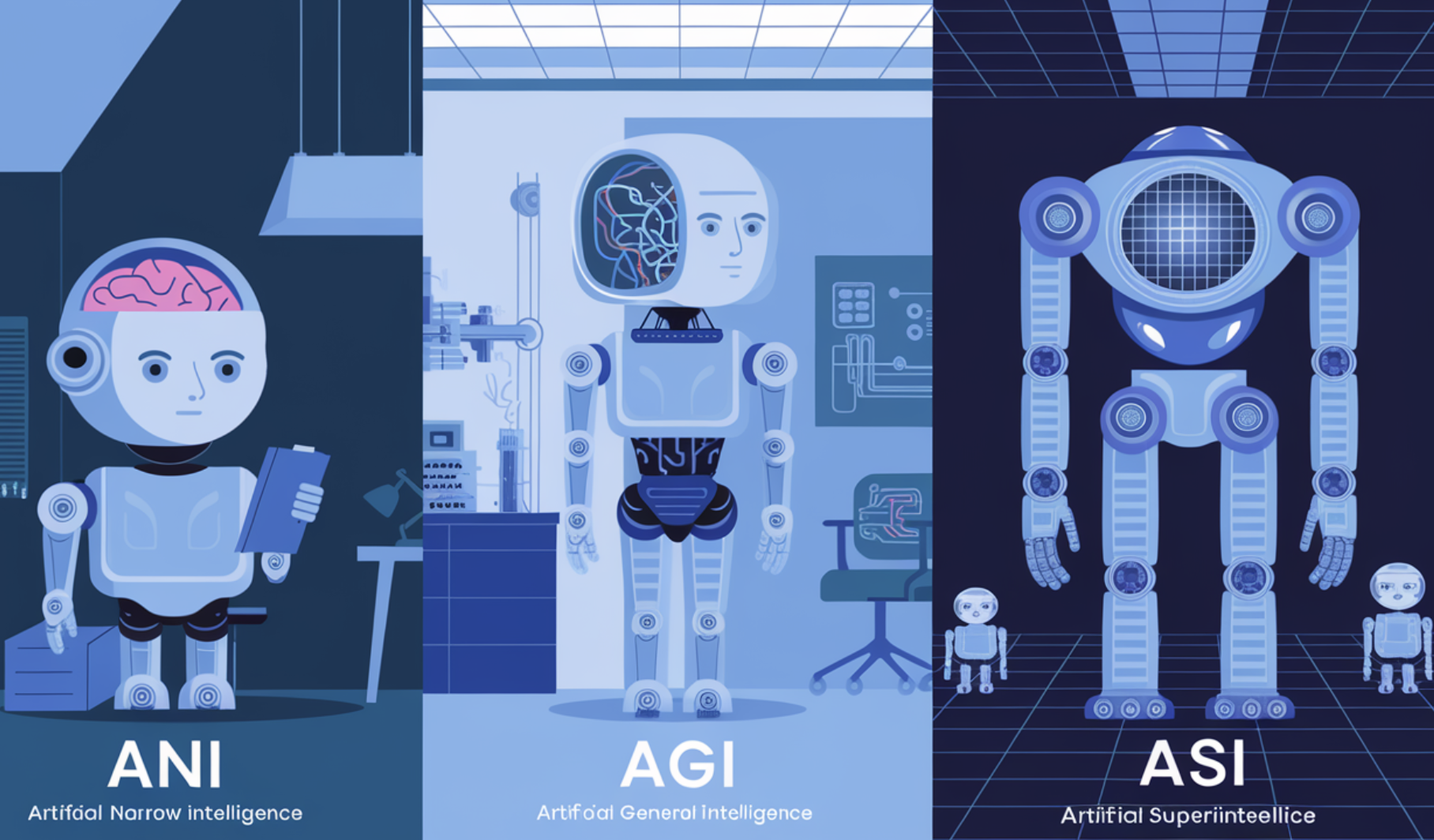
Understanding Artificial Intelligence (AI)
As AI continues to develop, it’s essential to understand its different forms: Artificial Narrow Intelligence (ANI), Artificial General Intelligence (AGI), and Artificial Super Intelligence (ASI). Each type represents a unique stage in AI’s evolution, showcasing varying levels of capability and potential impact.
Artificial Narrow Intelligence (ANI)
ANI, also known as ‘narrow AI’ or ‘weak AI’, is the most prevalent form of AI today. It is designed to perform specific tasks within set limits and cannot operate outside its programming. While ANI lacks the adaptability of human intelligence, it excels at focused tasks like:
- Facial recognition
- Language processing
- Data pattern analysis
Examples of ANI
Common examples of ANI include:
- Virtual Assistants: Tools like Siri and Alexa help with tasks such as answering questions and managing smart devices.
- Recommendation Systems: Services like Netflix and Spotify use ANI to suggest content tailored to individual preferences.
- Self-Driving Cars: These vehicles utilize ANI for safe navigation using sensors and machine learning.
While ANI is currently the only operational form of AI, it has numerous applications across industries, including finance and healthcare.
Artificial General Intelligence (AGI)
AGI, or strong AI, represents a theoretical level of AI that can perform any intellectual task a human can. Unlike ANI, AGI would be capable of:
- Understanding and learning from a wide range of information
- Reasoning and problem-solving across various contexts
The Challenges with AGI
Developing AGI faces significant challenges, such as:
- Understanding human consciousness and cognition
- Processing power requirements
AGI could revolutionize industries, such as:
- Healthcare: Diagnosing conditions with high accuracy
- Legal: Providing affordable access to legal advice
However, it also raises ethical and legal concerns that need to be addressed.
Artificial Super Intelligence (ASI)
ASI is a hypothetical form of AI that surpasses human intelligence in every aspect, including creativity and emotional understanding. It represents the ultimate goal of AI development. Key points about ASI include:
- It could lead to transformative advancements across various fields.
- ASI might create existential risks, as its capabilities could exceed human control.
Concerns about ASI emphasize the need for strict ethical standards and security measures to guide its development.
Conclusion
AI has evolved from ANI to the potential future of AGI and ASI. Currently, we are in the ANI phase, which is enhancing daily life and transforming businesses. AGI offers the promise of versatile tools that could match human intelligence, while ASI remains a distant possibility with both great promise and significant risks.
Understanding the differences between ANI, AGI, and ASI helps us navigate the future of this rapidly advancing technology, recognizing both its potential and its challenges.
Transform Your Business with AI
To stay competitive and leverage AI effectively, consider the following:
- Identify Automation Opportunities: Find key customer interactions that can benefit from AI.
- Define KPIs: Ensure your AI initiatives have measurable impacts on business outcomes.
- Select an AI Solution: Choose tools that meet your needs and allow for customization.
- Implement Gradually: Start with a pilot project, gather data, and expand usage thoughtfully.
For AI KPI management advice, connect with us at hello@itinai.com. For ongoing insights into AI, follow us on Telegram or @itinaicom.
Discover how AI can enhance your sales processes and customer engagement at itinai.com.




























